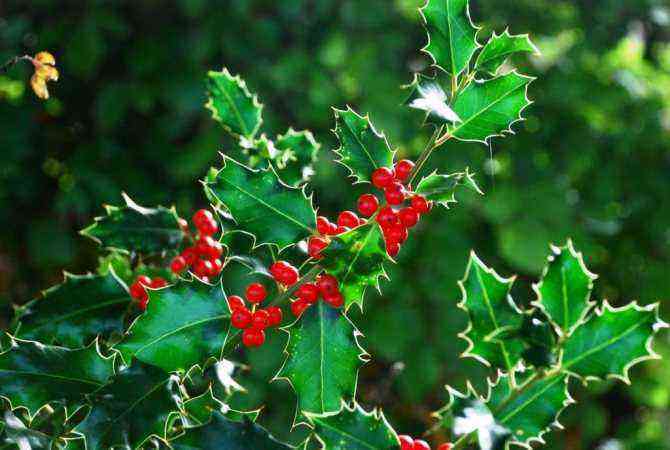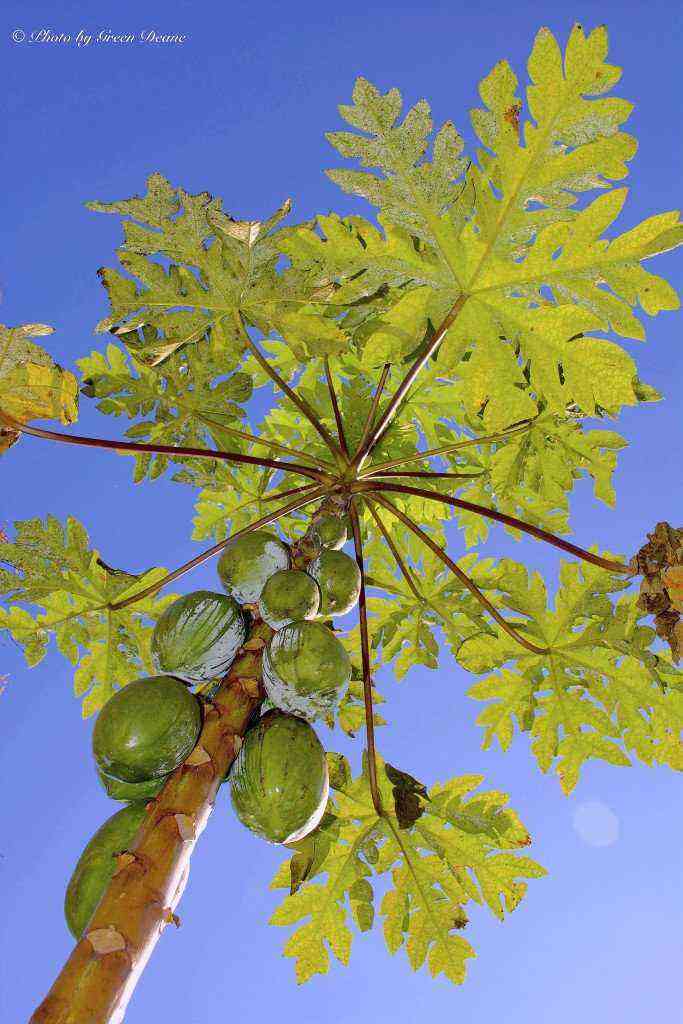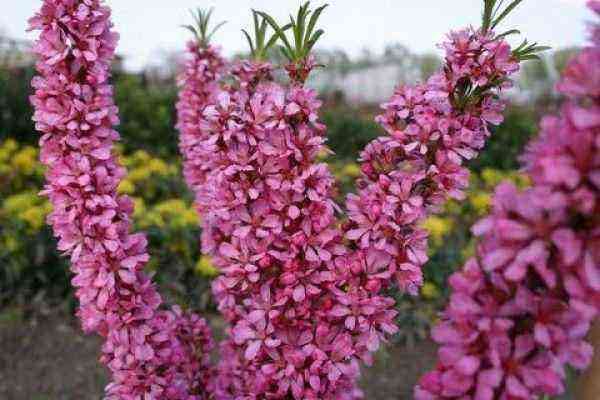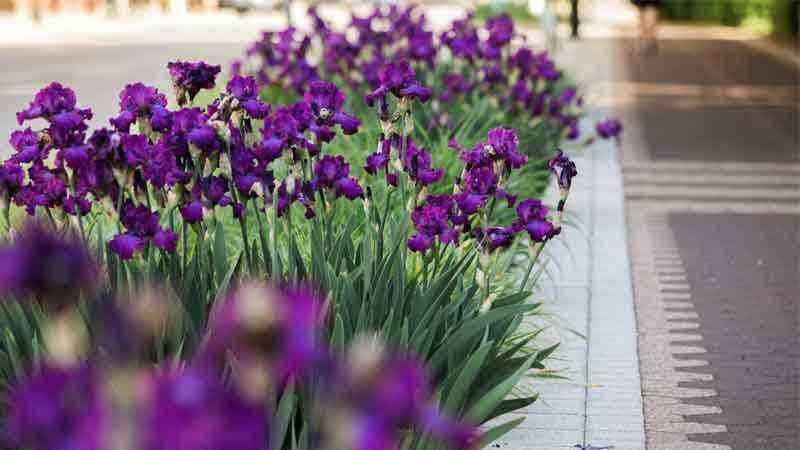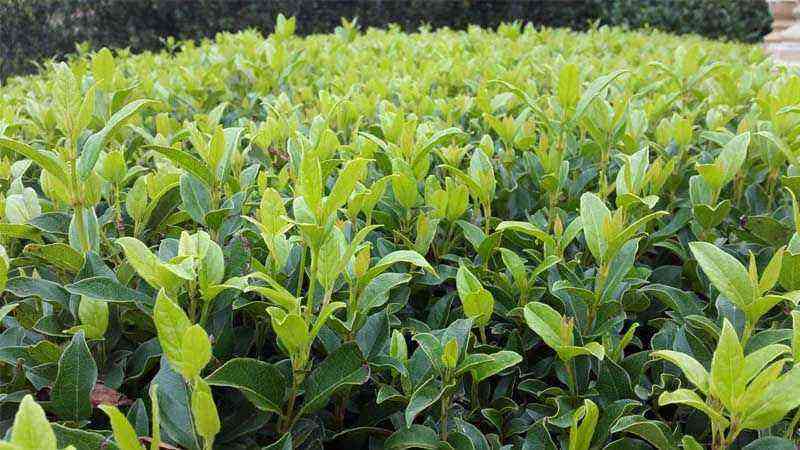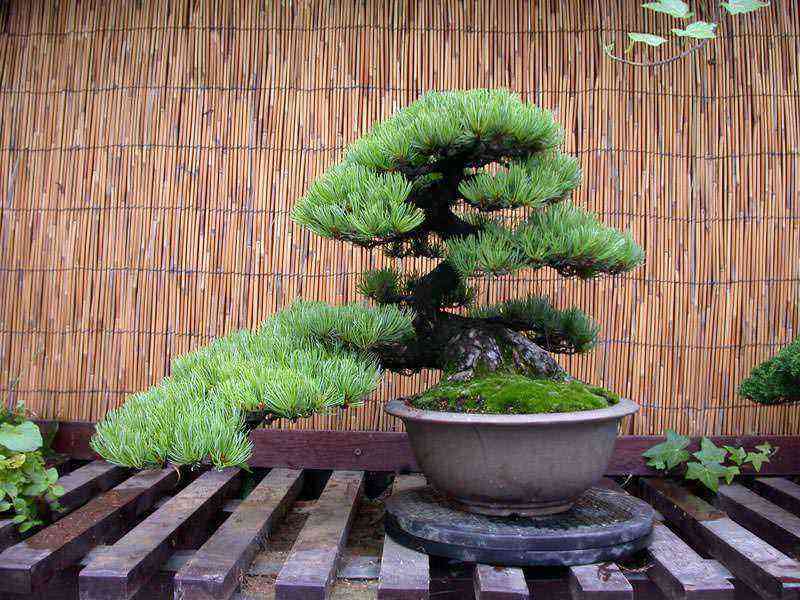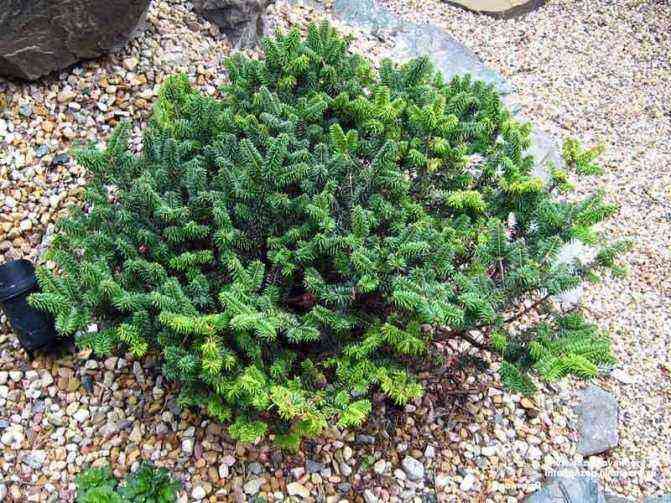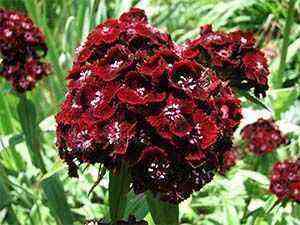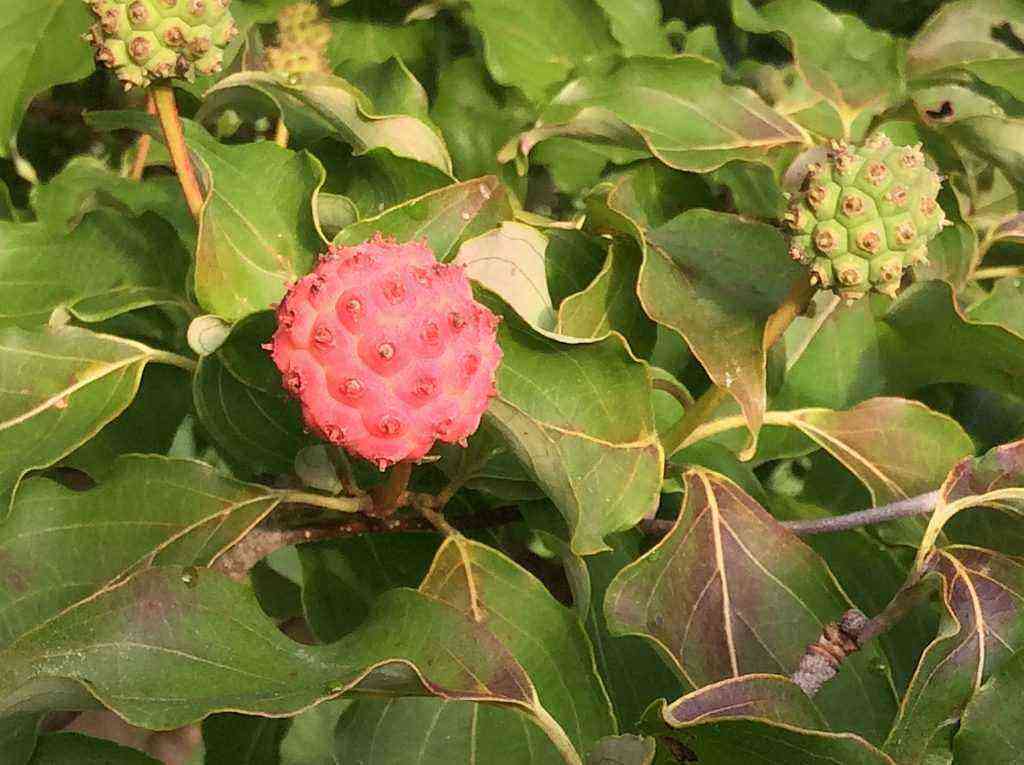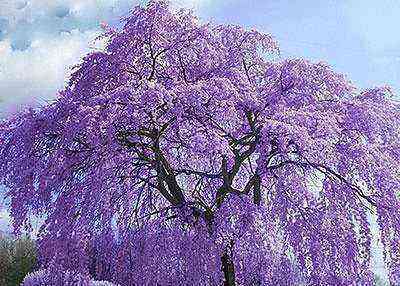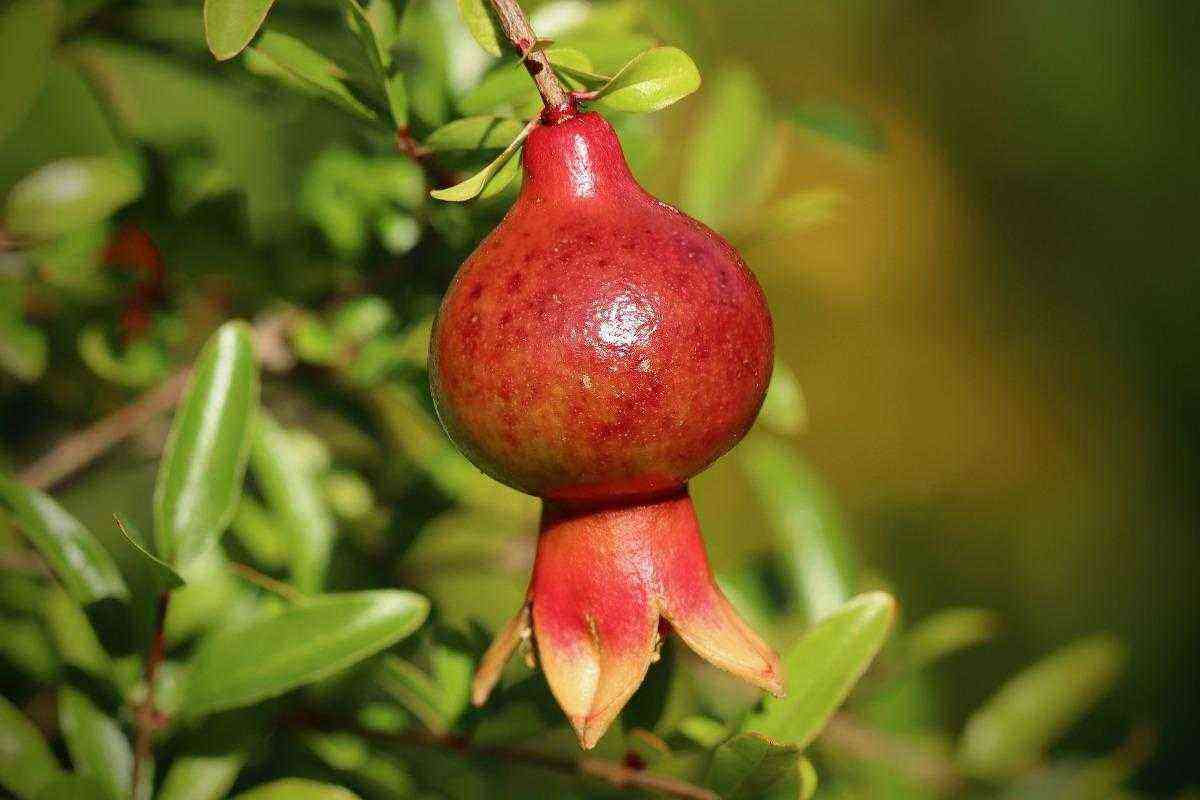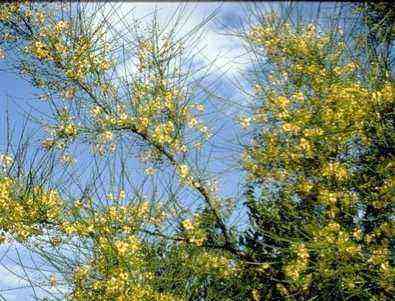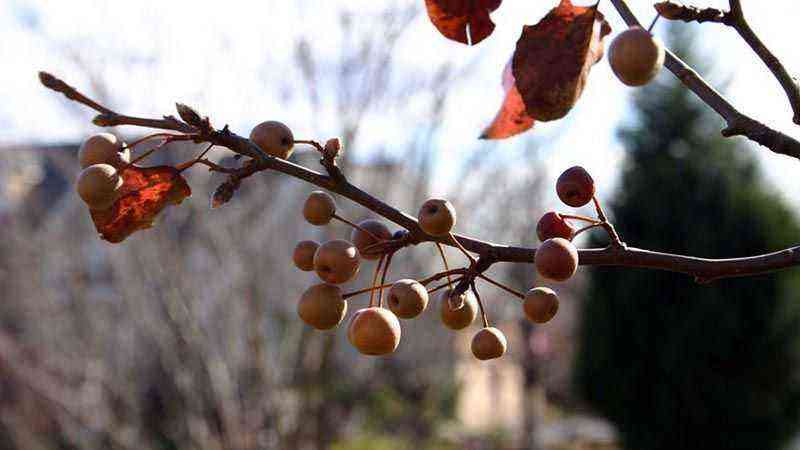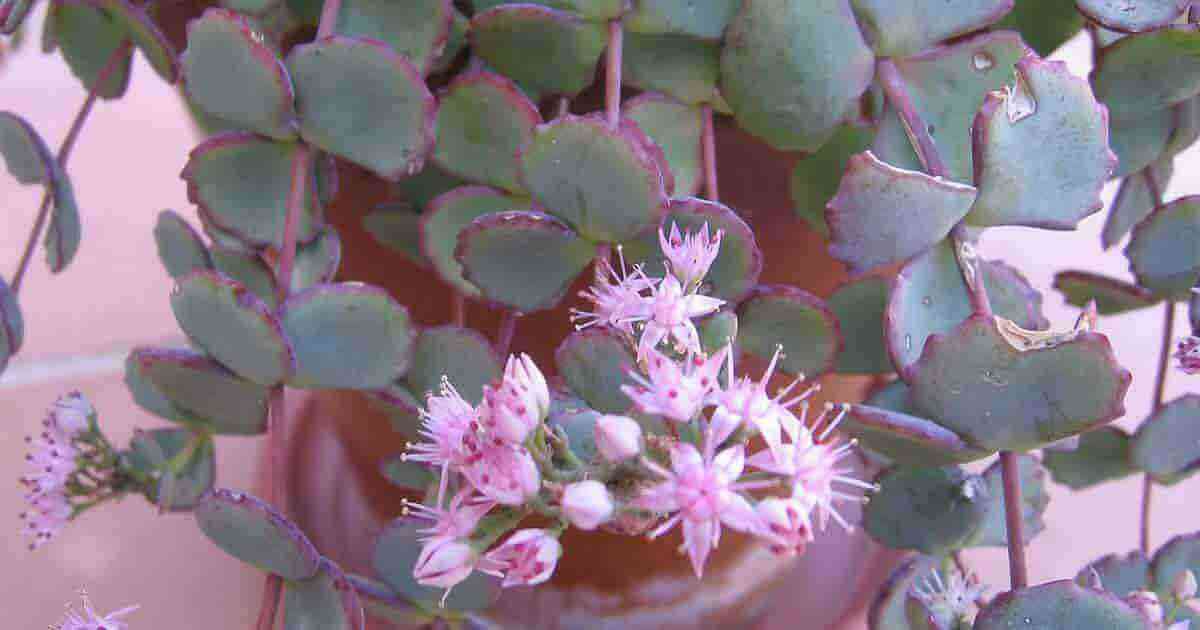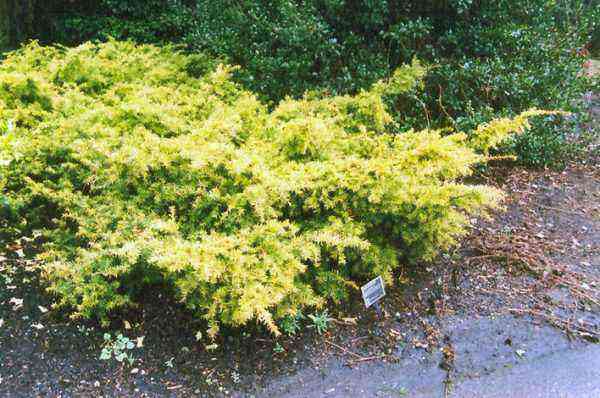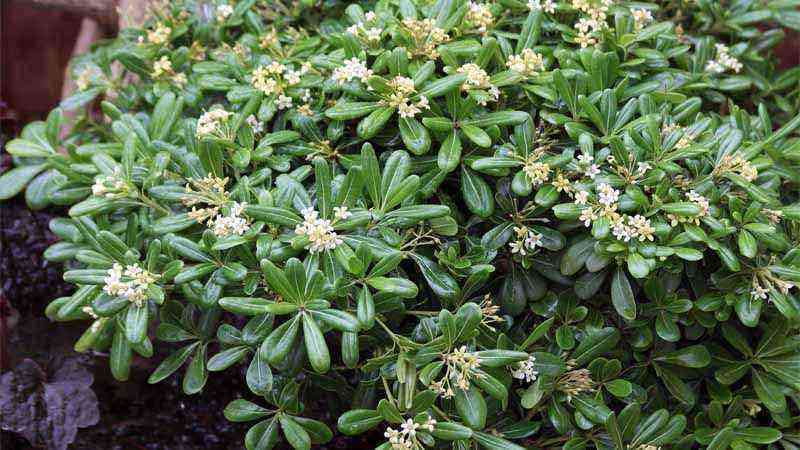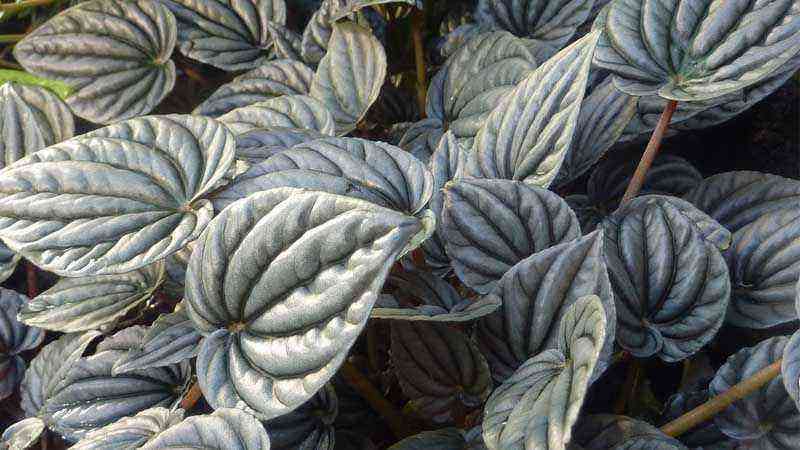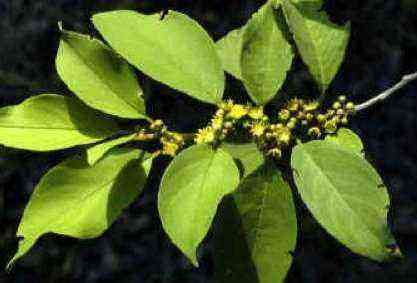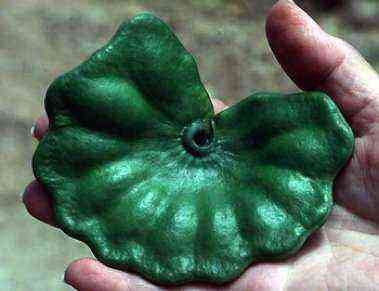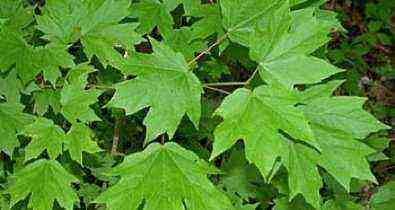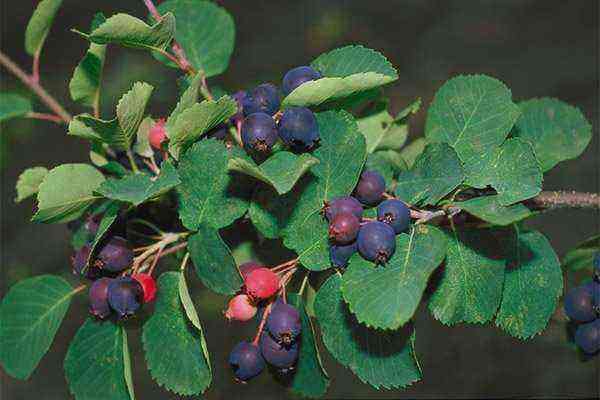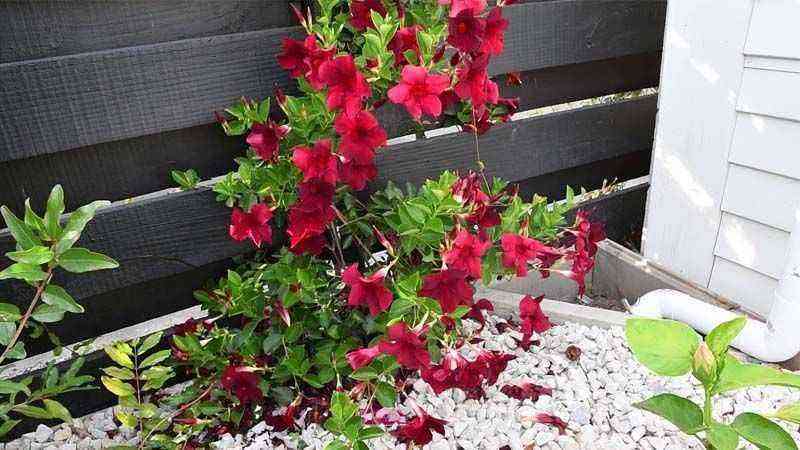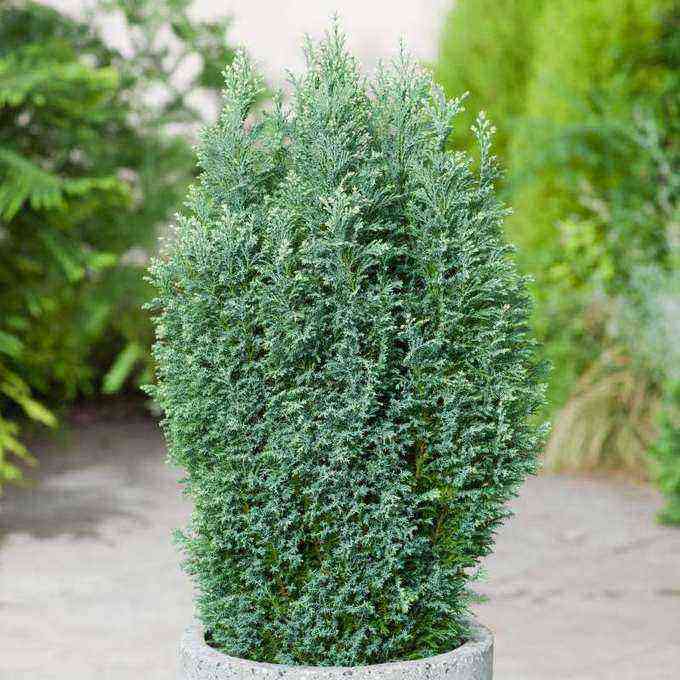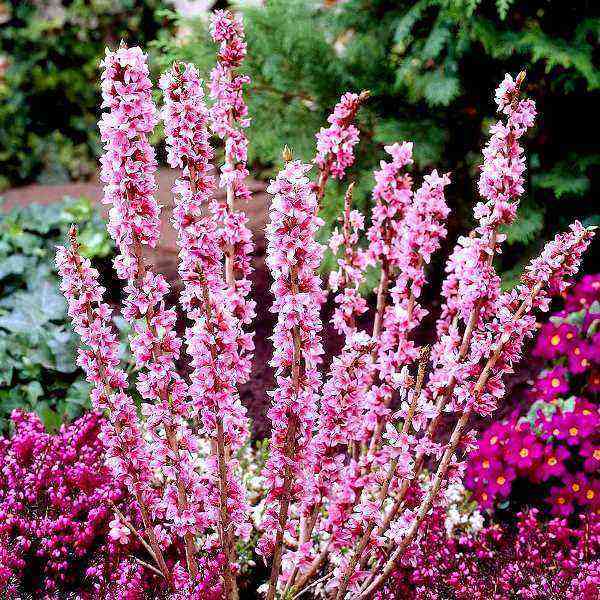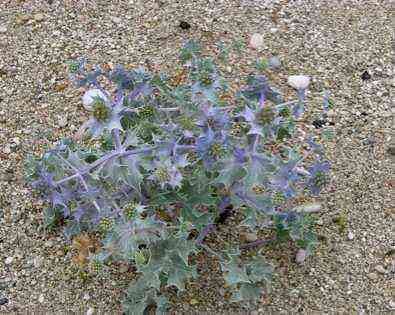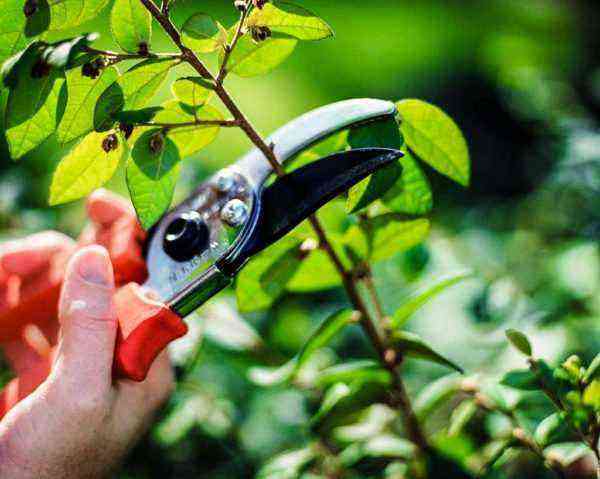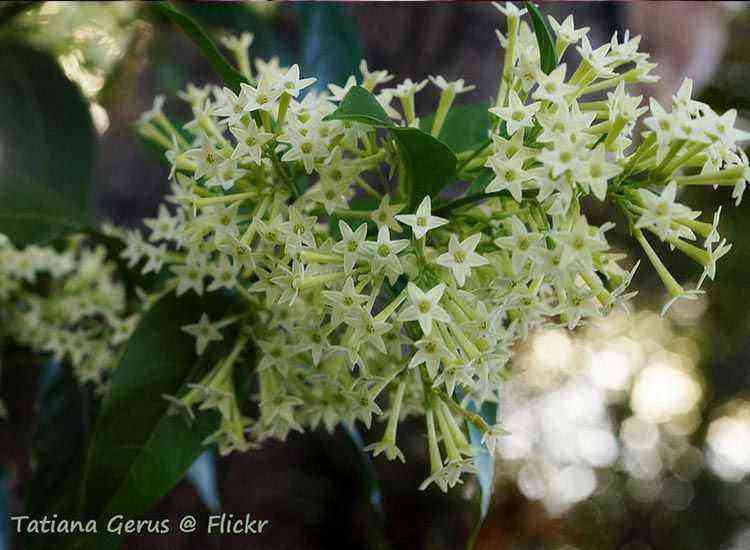Holly growers appreciate its unusual, shiny dark green leaves, attractive red, orange, yellow, white or black berries. The berries appear on the holly in the fall and adorn the plant throughout the winter. Among the many varieties of this plant in the middle lane, holly is the most popular.
When choosing a holly, pay attention to the winter hardiness of the variety. In the conditions of the middle lane, it is most logical to plant frost-resistant varieties. But if you come across a thermophilic holly, it is quite possible to plant it in a container that can be easily removed to the house on the eve of a cold snap.
Botanical Description of Holly
Holly (Latin Ilex) is a deciduous or evergreen shrub or tree from the Holly family. The Latin name of the plant means Stone Oak.
Budleya – planting and care in the open field
Medlar – useful properties, how to grow at home
Holly flowers are rather nondescript. They are very small and have a light color. Flowers are formed in the spring in the axils of the leaves. Very often, male and female flowers are formed on different trees, and therefore, in order for the plant to bear fruit, it is necessary to plant a male tree next to a female one. The Holly fruit is a stone berry.
Young branches of the Holly are pointed in shape, and the leaf plates are simple alternate, solid or indented at the ends. Holly Hollyleaf leaves have sharp thorns. They are unusually thorny and retain their sharpness for a long time even on fallen old leaves, so the fallen leaves should be removed very carefully so as not to injure your hands.
Holly grows both in tropical forests and in temperate climates – in fir-spruce or cedar-spruce forests.
In the garden
From a practical point of view, holly (or common holly) is of interest as a wind-shelter plantation, well suited for landing on the sea coast due to its high resistance to salt. It also makes a very durable hedge. The unusually thorny leaves of holly leaves on close-planted plants are a reliable guard of the garden from unwanted visitors. And decorative compositions made from this holly for Christmas or New Year make this culture even more attractive.
The value of Holly among different peoples
Holly has been known since ancient times. For example, the Druids symbolized this plant with the sun, and on gloomy, rainy days, the ancient Celts brought young Holly branches into the house so that the sun would peep out faster from behind the clouds.
Holly branches also adorned the walls of houses in ancient Rome during the Saturian celebration, which fell in the winter. With the adoption of Christianity, a new holiday appeared – Christmas. And today, in many countries, the branches of the Holly are used to weave a Christmas wreath, they are used to decorate dwellings.
“Magic force
Holly (or ordinary) people paid attention to holly long before the advent of Christianity. The inhabitants of the Atlantic and Mediterranean coasts, where this shrub grows wildly, has deified it since antiquity, endowing it with magical powers.
This vigorous plant can survive even in deep forest shade, where not a single seed will sprout. It enters the peak of its decorative effect in late autumn and survives the winter as an evergreen, decorated with leaves and fruits, armed with its blood-red poisonous berries that give protection to people.
It was believed that a magic wand could be made of it, and a spear with a shaft made of its wood would bring an unconditional victory over evil forces. And today there is still a belief that a bountiful harvest of holly fruits is a harbinger of a harsh winter.
Common types of Holly
The genus has about 400 species. The most common species used in park and garden culture are as follows.
Holly Holly (Ilex Aquifolium)
The plant is evergreen. The tree can grow up to 15 meters in height, forming a dense pyramidal crown. Shoots are short, spreading. The leaf plates are ovoid and have short petioles. The edges of the leaves are wavy, with large spiny thorns. Small white fragrant flowers are kept on short stalks. The fruits are in the shape of a ball, the color is bright red.
Holly Holly belongs to shade-loving, frost-resistant crops. It must be borne in mind that it grows very slowly. The lifespan is 1 century. Has female and male varieties.
Female varieties – Handsworth New Silver, Golden King, Amber. The male form is “Silver Queen”.
Holly Crenate (Ilex Crenata)
This is a shrub or short tree. Grows up to 3-5 meters. It grows slowly. Keeps haircut for a long time, so it can be used as a low-growing shrub in parks and gardens.
The leaves are shiny, dark green in color. The length of the sheet plates is 10-30 mm, the width is 10-17 mm. The edges of the leaves are serrated, may be prickly. The flowers are dioecious, white, with four petals. The fruit is a drupe.
Holly Altaclerensis (Ilex Altaclerensis)
It is a fairly hardy, frost-resistant variety. Refers to evergreen species. Leaves are smooth, without thorns. Perfect for growing in city parks, as it tolerates gas pollution well. Has female and male varieties. The female variety is Belgica Aurea, Wilsonii, and the male variety is Hodginsi.
Holly Whorled (Ilex Verticillata)
Decoratively attractive appearance. The height of the shrub is 3 meters. It is especially beautiful in winter, when the branches are covered with bright orange drupes. Grows in the shade, prefers moist soil rich in humus. Begins to bear fruit at the age of 16. The fruits ripen in late September – early October.
Growing by cuttings
This method allows you to preserve the decorative forms of the plant. Cuttings are cut from semi-lignified shoots of the current year. Their length is 4-5 cm, while each cutting must have 1-2 internodes. Slices are made at an angle: the lower one is under the lower kidney, the upper one is above the upper one. The prepared segments are immediately planted in a container filled with the following substrate: a layer of humus about 10 cm thick, then a layer of sand about 3 cm. The cuttings are placed in the ground to a depth of 1,5-2 cm. The planted cuttings must be protected from the bright sun and constantly sprayed. They take root in 2-4 weeks.
Care for Padub
Caring for a Holly is a lot like caring for a shrub plant. This, of course, is pruning, loosening, mulching the trunk circle, top dressing, and so on.
Related article: Marsh saxifrage – useful properties, description
Pruning, shaping a bush
Since the Holly grows very slowly, it needs pruning to form a compact bush. This procedure must be carried out in the spring. Sick, frozen shoots are removed. Many designers carry out a curly haircut that lasts throughout the season. Holly is a great solution for creating a beautiful topiary.
Shading the plant
In the spring, you need to pay attention to how open and sunny the place where Holly grows is. As noted above, this culture is not light and sun-loving, therefore, if necessary, it will need to be shaded. Otherwise, it will get burned.
Holly should be fed early in the season. To do this, a layer of compost mixed with complex mineral fertilizers is poured around the trunk circle of a bush (tree). With the rains, the fertilizer will gradually be absorbed into the soil and feed the plant’s root system.
Shelter for the winter
Young plants, even if they are a winter-hardy species, need shelter. The bushes can be covered with spruce branches or fallen leaves. The trunk circle is insulated with sawdust or peat.
Using Holly in the landscape
From such a plant, you can create a natural fence that will reliably protect the site from prying eyes. Thorny leaves will not allow uninvited guests to suddenly appear in the place of rest of people. Moreover, Holly will protect the site from strong gusts of wind.
Quite often, trees can be seen along the sea coast, as they are not afraid of salty soil. The ability to carry out designer pruning makes the shrub a desirable component of topiary.
Planting and caring for a holly
Holly — saplings or deciduous evergreen shrub, most common in tropical and temperate climates. Since ancient times, the branches of this plant have been used to strengthen the entrance to the dwelling. It was believed that holly can ward off impure forces.
Baltic, Celtic, Slavic, Scandinavian peoples used the branches of this shrub. Holly branches can be found on postcards, packaging, wreaths and garlands. Few know, but it belongs to poisonous plants.
Description of the plant
Holly has the following characteristics:
- Crown… Most often narrow, conical. The branches in it are densely located and there are a lot of them. The bark of the tree is smooth, silvery-gray.
- Leaves… Mostly simple. Their shape can be different: ovoid, oblong-elliptical and others. The color is mostly dark green. But there are species where the leaves have 2 colors: dark green and yellow (edging). The top of the leaves is shiny, the bottom is matte. The edges are covered with numerous denticles, wavy.
- flowers… They are inconspicuous, usually light in color. Their diameter is small, 6 – 8 mm.
- Fruit… They are called drupes. They can be of various colors: black, yellow, white, red, orange. The fruits are round in shape, with a diameter of 7 – 10 mm. Remain on plants until spring. The fruits, at first glance, seem appetizing, but they should not be eaten, as they are poisonous.
Holly pest problem
There are several common pests and diseases that harm holly. The most common diseases affecting holly are black spot, late blight of leaves and rotting of branches, as well as soot.
Most of Holly’s diseases are associated with fungal infections. Regular and periodic inspection of the leaves and stems of the holly tree will detect any of these conditions. You should keep a list of the most common holly tree diseases and their occurrence in order to identify them and fight infections.
Join our Facebook group
The most common types
In total, there are about 400 species of this plant, but we will consider three of them.
Holly
Found in Asia Minor, Southern Europe, North America. It is an evergreen pyramidal or spherical tree, reaching a height of 15 meters. Its life span is up to 100 years. It grows in nature even in the North Caucasus. Outwardly, it looks like a Christmas tree.
Its branches are sprawling and short. The crown is dense, oblong or pyramidal. The leaves are oblong-ovoid, wavy edges.
Holly flowers are white-leaved, fragrant small. They will remain on the branches for 14 days. Then they will be replaced by bright red fruits, the size of which can reach up to 1 cm. They remain on the stalks throughout the winter.
This species can be perfectly located in the shade, resistant to frost, tolerates temperatures up to minus 22 degrees below 0. The plant, located in central Russia, is not able to winter, therefore it is grown only in winter gardens.
It is worth knowing that holly holly is the variety thanks to which other varieties were bred. It is a dioecious plant with a deep root system. Fertile neutral soil is suitable for growing this species. For him, either full shade or partial shade is preferable. It perfectly withstands smoky, gassed air.
Holly crenate
The homeland of this plant is Sakhalin and the Kuril Islands. This species can be either a tree up to 7 m high or a shrub. The latter is less common.
The crenate holly stands out for its dense greenery, resembling boxwood in appearance. Divorced in Japan. In this country, it is a dwarf trimmed shrub.
Holly reserve
It is a hybrid of common, wrinkled and Korean holly. It is especially widespread on the territory of Russia, as it perfectly withstands frosts. This species has many varieties, the leaves of which are darkish, blue-green in color.
Fruit
Holly berries ripen in autumn. They winter well on a tree. This plant is one of the most beloved and most expressive symbols of Christmas. In Christianity, holly holly, a photo of which is even in biblical literature, is an expression of suffering. Its red berries symbolize blood. In general, the plant personifies eternal life and rebirth.
Holly berries were used centuries ago in the treatment of fever and several other diseases. There is evidence that they have repeatedly helped with smallpox epidemics breaking out in Europe.
Traditional healers know that although the fruits and leaves of holly have antipyretic and some other medicinal properties, they must be used with great care. The drugs made from them are very dangerous due to the content of such a highly toxic substance as ilicin.
Only fifteen or twenty berries will be enough for an adult to receive severe poisoning after eating them. Although in fairness it should be noted that not very many deaths are known in history. German physicians say that after being poisoned, you need to knock out the “wedge with a wedge”: it is enough to rub against the trunk of the first holly bush encountered for almost immediate healing.
Holly planting rules
This plant loves shade, rich, light and moist soil. A substrate of the following components is perfect for growing: humus, peat, sand, clay mixed with activated carbon. Drainage is also required. Its thickness must be at least 3 cm.
Holly holly requires cross-pollination. Therefore, you should have several such plants on the site. You can combine varieties by planting male and female trees side by side.
It should not be planted where there is a lot of sunlight. The plant can suffer from this, so the best place for it is where there are no bright rays. However, there are two-colored species with variegated leaves. In order for them to retain their color, these plants should be planted in a place with bright lighting.
Holly does not tolerate excessive heat. For the summer, it is recommended to move it to a room where the air temperature will not exceed 20 degrees C. Only young plants should be replanted every year. After that, as needed, once every 3-4 years. In the spring, it is simply moved into a larger container.
The main breeding methods:
- seeds;
- cuttings. This method is more common. Semi-lignified cuttings 10 cm long are required. For their rooting at the end of summer, cuttings are placed in a peat-sand mixture and placed in a place where there is no direct sunlight and high temperature. After the roots have appeared, the cuttings are planted in separate containers.
Since holly is a beautiful tree, it is often grown in pots. At home, the tree needs to be transplanted in the spring every 2 years into a larger pot.
Diseases and pests
This is not to say that the plant is not at all afraid of any diseases. They can affect mealybugs, scale insects, whiteflies, and aphids. With insufficient watering, a spider mite may be affected. The main method of control is insecticide treatment. If the soil is constantly moistened and water stagnates in the container, then root rot begins to develop.
With the appearance of spots on the leaves, the development of fungal diseases is possible. The fight against them is as follows: damaged leaves are removed, the bush is treated with a fungicide.
Direct sunlight can burn Holly, especially with dark foliage and young seedlings.
Care instructions
Holly holly does not require undue attention to itself. Both sandy and clay soils are suitable for it. The main thing is that they are waterproof and humus present.
The plant does not like drought. In summer, when it is hot, it should be watered abundantly. By the winter period, the number of irrigations should be reduced to moderate, preventing the soil from drying out. Pruning should be done after the end of fruiting.
In spring, young plants should be covered in order to protect them from the sun’s rays. From spring to autumn, once a month, you should feed the tree with liquid complex fertilizer, diluted in this ratio with 30 ml per 10 liters of water.
Related article: European underwood – useful properties, description
Peculiarities of growing
When growing holly, you can face some difficulties:
- Fungal diseases. In this case, spots of a purple hue will appear on the leaves. The fungus appears due to the fact that there was not enough watering with increased acidity of the soil. Or the plant lacked the necessary nutrients – potassium, nitrogen, phosphorus.
- Holly can strike late blight, which will lead to root rot and death of the tree. If this disease is found, then the plant should be immediately destroyed, and the soil around it should be treated with disinfectants.
- Holly does not tolerate aridity and heat. He prefers cool places.
Holly is not a very whimsical plant. Knowing the features of this plant, variety, planting and care rules, special difficulties should not arise. It is important to follow all the recommendations, and only in this case will the plant grow beautiful, pleasing to the eye.
Paraguayan holly (Ilex paraguariensis)
A shrub or tree up to 15 meters in height, sometimes up to 100 years old. The whole world has heard about the healing power of the leaves of the “green gold” of South America, and Paraguayan mate tea occupies a leading position among caffeine drinks.
Table of contents
Flower formula
In medicine
Paraguayan holly leaves have long been used to prepare a tonic drink – mate tea. Mate tea is a traditional drink of Latin Americans, but recently it has been rapidly gaining popularity all over the world, including in the CIS countries. Mate is leading even with green tea. Its unique composition does not cause heart palpitations and does not disrupt the sleep cycle like the caffeine in black or green tea. Among the active components of the drink is a special, harmless caffeine (matein). It does not contribute to addiction, and its strength lies in the fact that it helps the human body to get rid of addiction to true caffeine.
Paraguayan holly possesses: cardiotonic, tonic, antiseptic, diuretic, immunomodulatory, stimulating, antirheumatic, antitumor properties.
Mate drink helps to lower blood pressure, vasodilatation, increase mood, improve the cardiovascular system, strengthen memory, nervous system, increase concentration, improve digestion, remove excess fluid from the body and stimulate the adrenal glands, strengthen the body’s defenses.
Pagarvai tea is used in the treatment of obesity, as the drink suppresses hunger. The active substances of mate have a laxative, anorectic and diuretic effect. With regular use of the drink, the work of the heart and stomach improves, large blood vessels and capillaries expand, metabolism is normalized, memory and the nervous system are strengthened.
The drink made from Paraguayan holly leaves contains about 196 vitamins and mineral active substances, which is several times more than in green tea! A huge boost of vivacity given by mate can last as long as 10 hours.
Contraindications and side effects
Mate should not be drunk by those for whom theophylline or theobromine is dangerous, people with high acidity and kidney disease, especially with a tendency to salt deposits (stones, sand). Paraguayan tea is not recommended for children, pregnant women and nursing mothers.
In cooking
In addition to the world-famous tonic and healing mate tea, the bark of the plant is used in cooking. Chopped bark is an excellent seasoning with a specific flavor for fish and meat dishes.
The fruits of the Paraguayan holly, in contrast to all parts of the plant, are poisonous.
In cosmetology
Recent studies on the components of yerba yerba mate have shown anti-inflammatory and antioxidant properties. The use of Paraguayan holly is permissible in anti-aging products, anti-inflammatory emulsions and ointments (acne therapy), in spa treatments (creams, masks, wraps). Since high UV filters have been found, mate is used in sunscreens and after-sun creams.
Classification
In the modern classification, the Paraguayan holly belongs to the Angiosperms department, the Dicotyledonous class, the Holly species, the Holly family (Latin Aquifoliaceae).
Botanical description
Paraguayan holly is an evergreen shrub, or a tree with smooth whitish bark and fairly hard wood. The branches of the plant are spreading, forming a pyramidal crown. The plant grows very slowly, living up to 50-100 years. Some trees reach 100 meters in height, but usually grow up to 15 meters. Cultural specimens are cut to form neat, up to 1,5 meters high bushes. Leathery, glossy obovate leaves, placed alternately on the shoots. The edges of the leaf plates are serrated.
From late May to mid-June, the plant enters the flowering stage. Flowers are axillary, dioecious, on short pedicels, arranged in bunches at the base of the leaves. Corolla petals are greenish-white. After flowering, around September, drupes of bright red, spherical shape are formed, which stay on the branches all winter. Holly reproduces by seeds and vegetatively (cuttings). The formula of the Paraguayan holly flower is ♂L4 + T4.
For optimal growth and development of the Paraguayan holly, conditions of a tropical and subtropical climate are ideal, where air humidity should be 1500 mm per year with precipitation. On plantations, shrubs are harvested 5 years after planting by cuttings.
Distribution
The habitat of the Paraguayan holly is Brazil, Uruguay, Argentina and Paraguay. In the wild, it grows in the Mediterranean, Europe, Asia Minor, North America, along the shores of the Atlantic Ocean. It is found in deciduous and coniferous forests, in semi-shady or well-lit areas. Prefers high soil moisture.
The plant is cultivated in Latin America and the tropics of Asia. Especially famous for the large plantations of Paraguayan holly is the province of Misiones in Brazil. The territory of mate occupies more than 65 thousand hectares here. There have been attempts to grow plants in other regions of the world, but the climatic conditions for optimal growth and development of the holly did not fit.
Procurement of raw materials
For medical purposes, young shoots, leaves, mate bark, as well as the underground part of the plant – the roots – are harvested. The leaves have a special value and useful properties in the spring-summer period. The process of preparing raw materials for mate tea is quite lengthy. Since paraguayan holly grows in regions with high humidity, parts of the plant for preparing a drink must be thoroughly and thoroughly dried.
Leaves are collected no more than once every three years in order to enable the tree to recover and replenish its energy. Holly is dried in two ways. If the goal is to obtain green mate tea, then the raw materials are dried using modern dryers with hot air at a temperature of 60 °. For a golden hue, the twigs are dried over an open fire. The shredded plant, dried in accordance with the norms of the mate preparation technology, must necessarily be with natural dust. Well-dried branches and leaves need long-term storage (at least a year) in bags, after a time they are crushed into powder. Thus, the dried plant retains its medicinal properties.
Related article: Sickle hairy – useful properties, description
Chemical composition
According to the results of multiple studies of the composition of the plant, it turned out that the Paraguayan holly is a unique source of vital and essential active components. Resins, vitamins C, A, B1, B2, B6, E, choline, riboflavin, pantothenic, ursolic, nicotinic acids, cholene, chlorophyll, inositol, magnesium, iron, potassium, manganese, tannins, glycosides, syringin, inbortin, calcium , sodium, silicon, potassium, cellulose, hydrochloric acid, phosphates – and this is not a complete list of active substances of Paraguayan holly. Such a set of substances is extremely rare in one plant specimen and is considered a unique composition. The drupes contain dyes – rutin and ilexanthin.
Strong infusion of mate has a light sweetish taste and contains some alkaloids from xanthines. This includes theobromine, caffeine, theophylline.
Pharmacological properties
In homeopathy, powder-dried leaves, flowers and young shoots of Paraguayan holly are used as an anti-febrile and diuretic for rheumatic pains, dropsy, as a diaphoretic, antipyretic, expectorant for colds, bronchitis, pneumonia. The diuretic effect of mate is due to the fact that it contains xanthine compounds.
Preparations from Paraguayan holly are recommended to reduce the destructive effect of neuroses, depressive conditions, since the treatment suppresses the release of adrenaline. As a result, sleep is normalized, insomnia disappears, symptoms of fear, emotional imbalance, and tension are relieved.
Pharmacological agents based on Paraguayan holly have an astringent, stimulating, diaphoretic, diuretic, antifebrile, choleretic, antioxidant, cardioprotective, anti-allergic, anti-sclerotic effect on the human body. Mate extracts, decoctions are used as a central nervous system stimulant.
In pharmacology, the basis of drugs is holly leaves. The fruits, when ingested, cause mild intoxication of the body, in particular diarrhea and severe nausea. In case of poisoning, gastric lavage is prescribed.
Mate is used in the treatment of gastrointestinal diseases, helps to eliminate inflammation of the gastric mucosa, regulates cholesterol levels, activates bile secretion and liver function. Toning tea is excellent for satisfying hunger and is considered to be an effective complementary component of a weight loss diet. A healing drink made from holly leaves is especially effective against stress and depression, reduces anxiety, and promotes normal sleep regulation.
It is used to prevent diseases of the heart muscle and blood vessels, and lowers blood pressure. The components of preparations from Paraguayan holly actively supply active oxygen to the bloodstream, due to the presence of chlorophyll. Mate relieves fatigue well, prevents the formation of lactic acid in muscles after intense physical training.
Real holly leaf drink resembles green tea in appearance, but its taste is different. Mate contains herbal notes with a slight bitterness and sweet aftertaste. There are no analogues of holly leaf tea. In order to get the maximum of nutrients and vitamins from the drink of the Indians, it is recommended to drink mate warm, but not hot. Brew in hot water without boiling. Dried leaves give the drink a beautiful golden hue, stems provide maximum vitamins, and light dust is evidence of the quality and good drying of Paraguayan tea.
The use of mate drink during illness promotes its easy course, accelerates the healing process, and also stimulates the body’s defenses, removes unnecessary toxins and toxins. Holly preparations are excellent antiseptic agents that increase the number of leukocytes in the blood.
Thanks to clinical studies of mate, its ability to stimulate the work of the adrenal glands has been proven, to comprehensively affect the nervous and endocrine systems of the body. It has a mild laxative, diuretic effect.
Application in folk medicine
The bark in the form of poultices, as well as compresses, is applied to the affected skin in case of bone fractures, as it relieves pain well. A decoction of the bark is an effective cough suppressant and has a strong diuretic effect.
Holly drupes are poisonous to the human body, but can also be beneficial. The ancient Indians used holly fruits as an antidote for poisoning as a laxative and emetic. In modern medical practice, fruits are used to stop bleeding. Drupes contain the toxic component iliycin, so excessive uncontrolled use of them can provoke poisoning (only 25 fruits eaten can lead to fatal consequences).
Historical information
Residents of Latin America have long considered holly a sacred plant, and the ritual of drinking a tonic drink takes them from 1,5 to 2 hours. Mate is a traditional drink that is consumed in the midst of business meetings and diplomatic receptions, social events and home tea drinking. Refusal of the drink leads to the chagrin of the hospitable hosts, and is also considered an insult and ignorant behavior of those unwilling to share their participation in the ritual of the sacred tea drinking.
Tea made from young shoots and dried leaves of Paraguayan holly is drunk throughout the day. The bitter drink mate is consumed in the morning, in the afternoon – sweet terere, in the evening – sweet. Bitter tea without sugar is a man’s drink, sweet mate is used by women and children. Orange juice, milk, mint and other ingredients are added to the tea, depending on personal preference.
The very name “mate” comes from the Indian word mati. This is how the Guarani Indians called the vessel (“kalabas”) from an ordinary pumpkin. The vegetable is used for tea drinking, as well as for preparing the drink itself. Locals call mate “kaa”, in Europe the name Paraguayan tea is better known. In pharmaceuticals, the plant in Latin America has acquired the name Matefolium. In the world, mate is a popular drink known as the “green gold” of South America.
Paraguayan tea is steeped in myths and legends of its origin. According to the legend of the ancient Guarani, the god Paya Sharume with fair skin and blue eyes once dominated their land. It was he who taught the population about religion, medicine and agriculture. Mate is considered a divine medicinal plant, because the god Sharuma himself gave it to him.
The French naturalist Augustus de Saint Hileyre explored the mate thickets in the Paraná basin back in 1822. Since that time, the leaves of the plant have been successfully used for a healing and tonic drink. Ancient Spanish and Portuguese sailors got rid of seasickness and scurvy by taking mate regularly.
